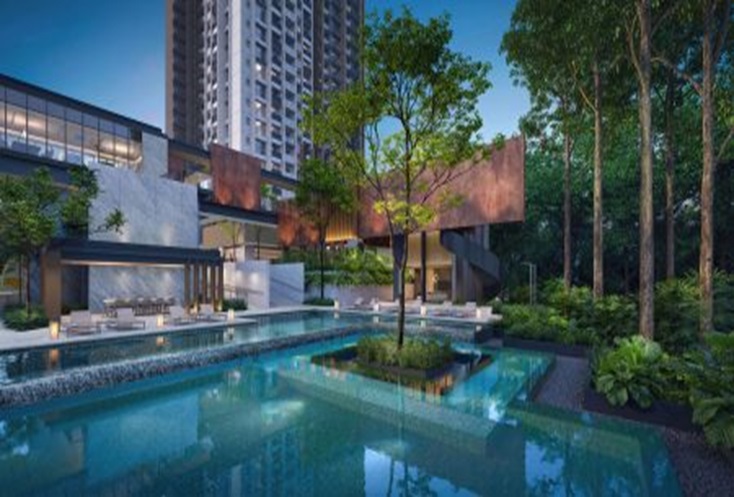Singapore’s wellness scene has flourished in recent years, and yoga has firmly secured its place in the hearts of many. But with so many yoga places in Singapore now available—from minimalist studios in HDB enclaves to more luxurious sanctuaries—it can be overwhelming to decide where to commit your time and energy. While location and cost often top the list of considerations, deeper factors like studio vibe, teaching style, and overall environment tend to make the biggest impact on your experience.
This article explores the real markers of a good yoga space and how to assess them practically. If you’re looking to build a consistent and meaningful yoga practice, it’s time to look beyond superficial metrics and evaluate what truly aligns with your needs.
Why the Studio “Vibe” Matters More Than You Think
Vibe isn’t about incense or mood lighting—it’s the unspoken energy you feel when you walk in. Some yoga places in Singapore instantly feel calming, while others might feel transactional or rushed. The vibe influences how safe, focused, and welcomed you feel before even stepping on the mat.
Key elements of studio vibe include:
- Energy of the space: Is it calm and soothing, or loud and chaotic?
- How the staff greet you: Is there a warm, authentic welcome or just a procedural check-in?
- Studio design and layout: Open, clutter-free spaces tend to support clarity and mindfulness.
- Noise levels and lighting: Harsh lighting or traffic sounds can break concentration.
Pay attention to how your body and mind react when you first enter a studio. That instinctive feeling often tells you more than a class schedule ever will.
The Role of Instructors: More Than Just Guides
An instructor’s impact cannot be overstated. A skilled teacher can transform an average session into a profound, personal experience. When evaluating yoga places in Singapore, it’s worth checking the instructor line-up and understanding their approach.
Here’s what to look for in a yoga teacher:
- Certifications and experience: While not everything, they reflect training standards.
- Clarity in instruction: Can they explain poses clearly and safely?
- Adjustments and modifications: Are they attentive to individual needs or injuries?
- Presence and pacing: Do they create a calm atmosphere, or rush through sequences?
- Personal warmth: Do they make an effort to connect with you?
Don’t hesitate to trial a few teachers across different studios. Over time, you’ll begin to notice who resonates most with your style, energy, and goals.
Class Culture: Are You Seen, or Just One of Many?
Class culture is another overlooked factor when comparing yoga places in Singapore. Some studios feel more like close-knit communities, while others may be more performance-driven. Ask yourself:
- Do students support each other, or is there silent competition?
- Does the instructor engage with the group or just run through the motions?
- Are beginners treated with patience and respect?
- Is progress celebrated, regardless of how ‘perfect’ a pose looks?
Studios with strong community culture often host workshops, events, or post-class discussions. These create opportunities to connect, share, and grow—making your yoga journey more enriching over time.
Ambience and Environment: Small Details, Big Impact
Environmental factors—though subtle—play a huge role in whether you stay consistent with your practice. A clean, calm, and comfortable space promotes better concentration, physical safety, and emotional wellbeing.
What to observe:
- Flooring: Hardwood or cushioned flooring reduces strain during seated poses.
- Ventilation: Proper airflow prevents fatigue and supports deeper breathwork.
- Lighting: Soft, natural lighting reduces eye fatigue and promotes relaxation.
- Temperature: Spaces that are too cold or too hot can distract or affect performance.
- Cleanliness: Regular cleaning of mats, floors, and common areas shows care and respect.
Studios like Yoga Edition focus on these important details—creating thoughtfully designed spaces that allow you to relax and engage fully in each practice.
Class Types: Do They Match Your Intentions?
Not all yoga is created equal. It’s important to choose a studio that offers class types aligned with your current goals, whether that’s flexibility, strength, healing, or stress relief.
Here are common class types to look out for:
- Hatha: Great for beginners; slow and steady
- Vinyasa: Dynamic, flow-based and energetic
- Yin: Deep tissue release and long-held stretches
- Restorative: Focused on relaxation and healing
- Prenatal or Seniors’ Yoga: Tailored for specific needs
If a studio offers a good balance of foundational and advanced classes, it shows they cater to long-term growth. Look for descriptions that are informative—not just trendy jargon—and check whether teachers explain the why behind movements.
Flexibility and Booking Convenience
In a city like Singapore, flexibility is key. Life moves quickly, and your yoga studio should offer systems that support, not stress, your practice.
Things to consider:
- Class booking apps or online platforms
- Cancellation policies that are fair and reasonable
- Package flexibility (e.g. drop-in passes, 5-class or 10-class packs)
- Availability of trial classes before committing long-term
Convenience affects consistency. A studio that makes it easier to show up removes one more obstacle between you and the mat.
Testimonials and Real-World Feedback
Google reviews and word-of-mouth matter. Not every yoga place in Singapore will be right for you—but feedback from actual students can reveal recurring patterns (good or bad) worth noting.
Look for mentions of:
- Instructor attentiveness
- Cleanliness and ambience
- Class pacing and structure
- Studio values and integrity
If multiple reviews reflect the same strength—say, “supportive instructors” or “peaceful ambience”—there’s a good chance the studio walks its talk.
Creating a Personal Checklist
Choosing a yoga space is a personal journey. To simplify your search, here’s a quick checklist to reflect on after visiting or trialling a class:
- Did I feel relaxed and comfortable upon entering?
- Was the instructor engaged, respectful, and clear?
- Did the class pace suit my energy level?
- Was the space clean, well-lit, and well-ventilated?
- Would I look forward to coming back?
Let your answers guide you towards a space that truly supports your wellbeing.
Real-Life FAQ
Q: Is it okay to try multiple yoga places in Singapore before choosing one?
A: Absolutely. In fact, it’s encouraged. Many studios offer first-timer promos or trial classes. Exploring different environments helps you make a more informed and intuitive decision.
Q: I’m more concerned with teacher quality than facilities. How do I find the right fit?
A: Look up instructor bios on the studio’s website, attend their classes during trial periods, and ask other students for recommendations. The teacher’s energy and attentiveness often matter more than aesthetics.
Q: What if the vibe of a studio feels off, but it’s nearby and cheap?
A: Convenience shouldn’t come at the cost of your peace. If a studio doesn’t feel right, it’s worth commuting a bit further for a space where you feel seen, respected, and safe.
Q: Can I switch studios later if my goals evolve?
A: Yes. Your yoga needs may change over time. Whether it’s to focus on restorative practices, deepen into spiritual work, or explore advanced asanas, there’s no harm in changing studios as your path shifts.
Q: How do I balance trial classes without getting overwhelmed?
A: Try one new studio per week and take notes about your experience. Listen to your body, trust your intuition, and remember: consistency matters more than perfection.







